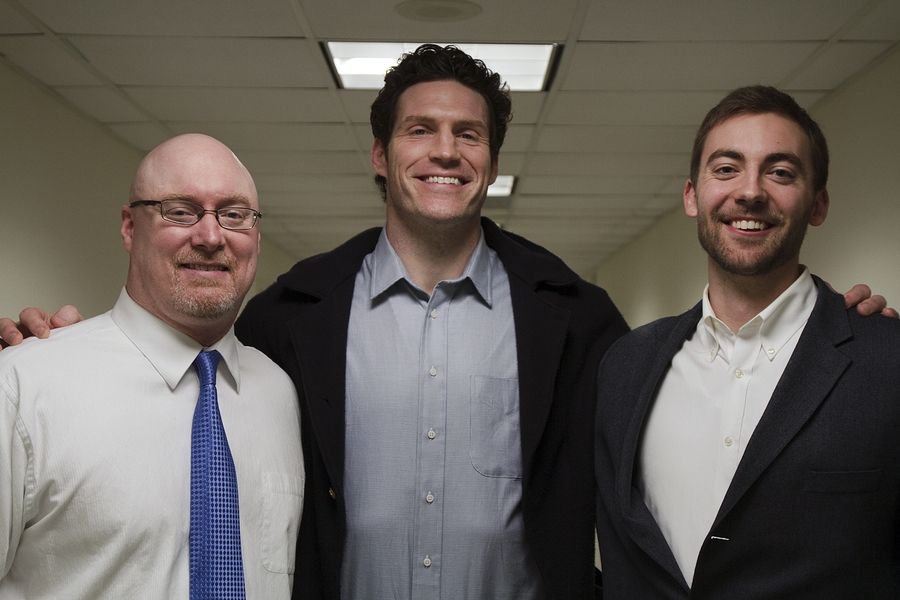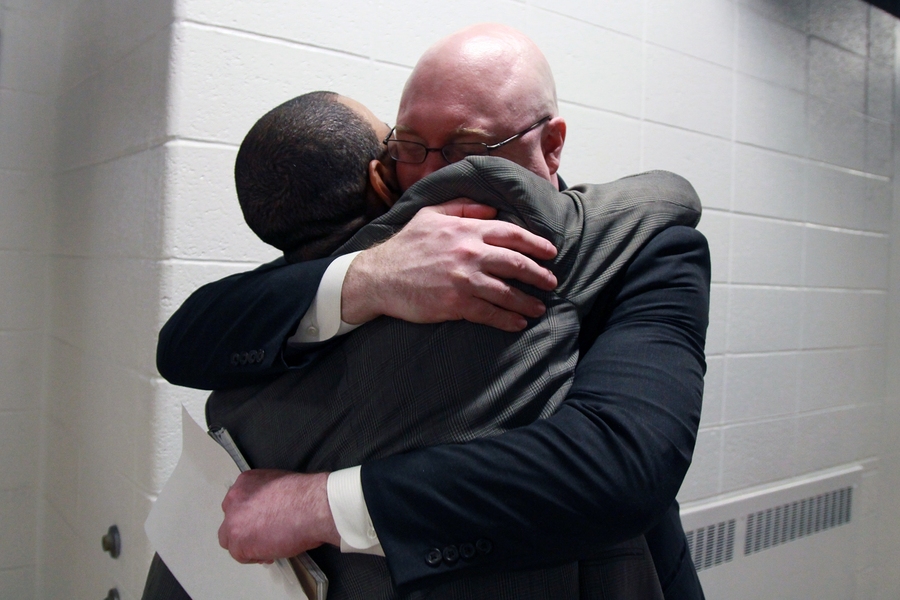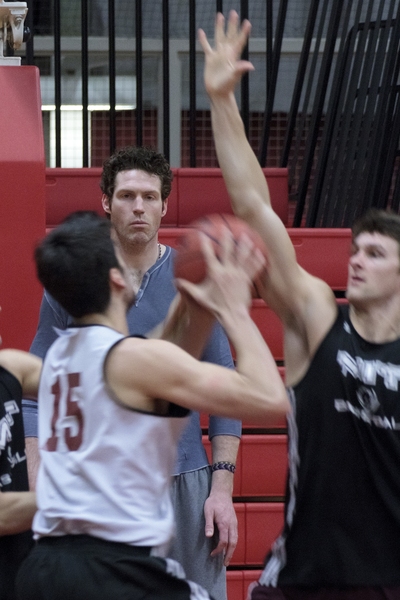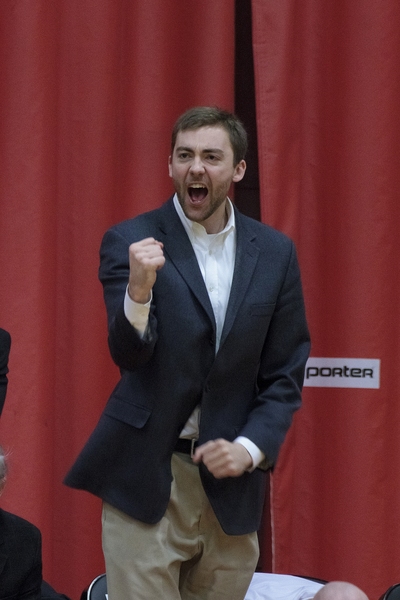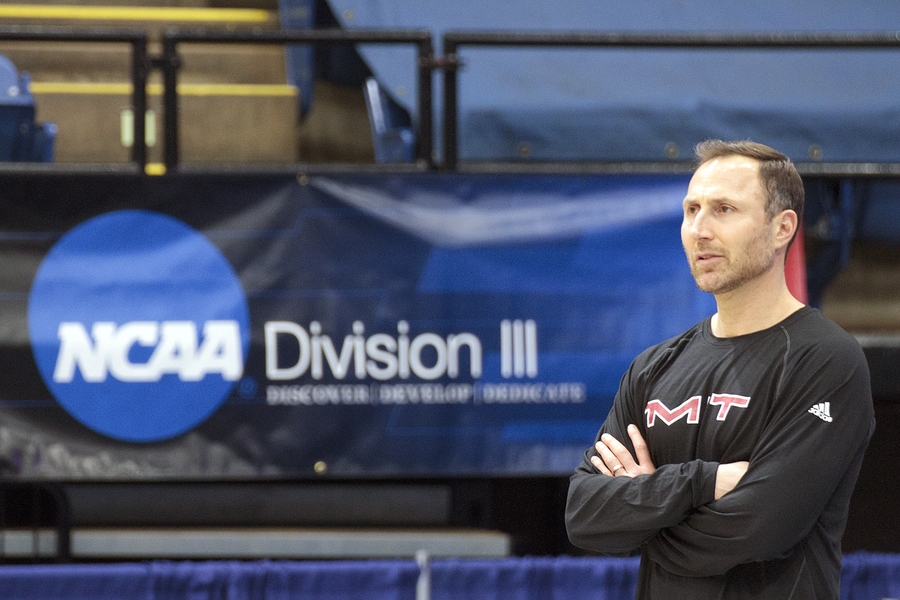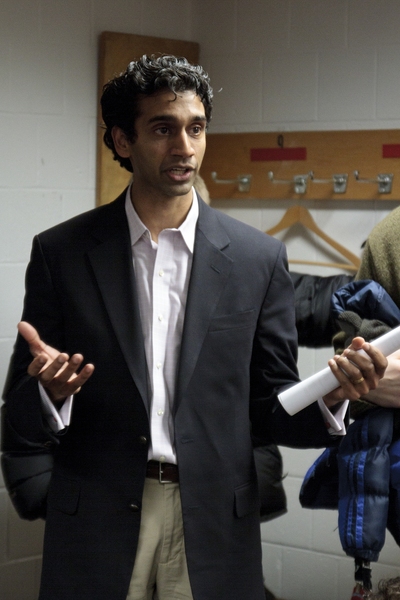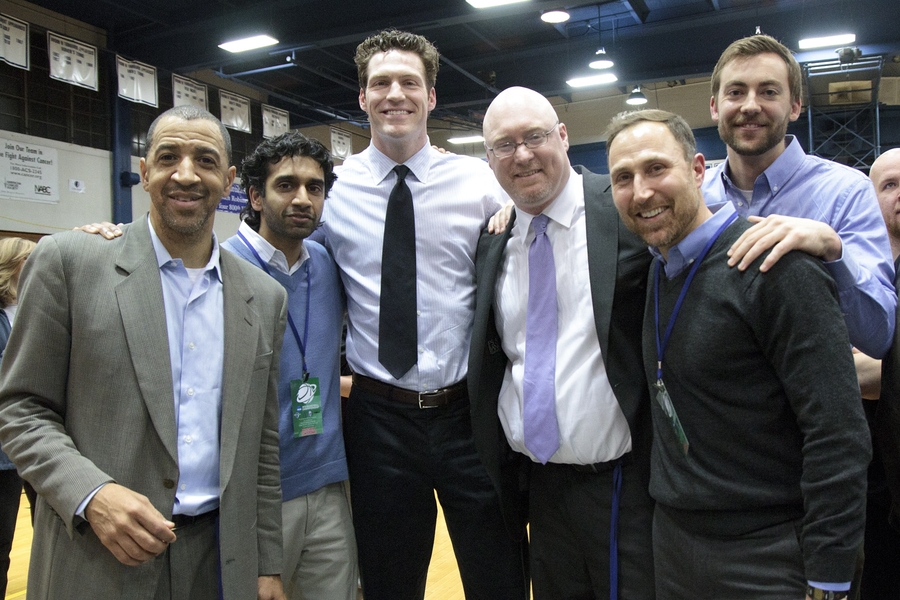If the MIT Men’s Basketball squad seems confident that they can handle the competition this weekend at the NCAA Division III Championship, it may be because they have a professional perspective on the challenge.
Three of the team’s assistant coaches have played pro basketball: Associate Head Coach Kevin Byrne played in Europe, Assistant Coach Paul Grant played in the National Basketball Association (NBA), and Assistant Coach Bill Johnson ’10 traveled for stints with teams in Costa Rica and Iceland after his career at MIT.
Head Coach Larry Anderson knows what this elite-level experience means for his student-athletes. “Instant respect,” he says. “When you have people on your staff who are so passionate about the game, who worked extremely hard to get where they did … as soon as the first words come out of their mouths, the kids tune in.”
And the players agree. “I definitely think it’s a big plus,” says first-year guard Nicholas Prus. “When they say things — I don’t want to say there’s more value, but it means something special.”
Paul Grant: From the NBA to Division III
Grant was the 20th pick in the 1997 NBA draft. After a career that included time with the Minnesota Timberwolves and the Utah Jazz, he moved to Boston, where he and his brother had started a real-estate company.
It’s hard to miss the lean, 7-foot-tall former center on the MIT bench during a game. But players and coaches say it’s not Grant’s physical presence that makes a difference to the team — it’s his intellect and the way he approaches work and life. “Here’s this 7-footer who looks like he’s going to eat you, but he’s a very cerebral guy, very, very smart. I think that’s why he likes coming out to MIT,” Johnson says.
In practice, Grant says he doesn’t play “full tilt,” but does try to bring a measure of NBA-level intensity and physicality. “You never know who you are going to play,” he says. “Just because I’m 7 feet tall doesn’t meant that you shouldn’t take it strong to the hole against me. You have to be smart in your decisions, but if you’re going to take it to the hole, take it strong — and if you don’t, I’m going to sense that and maybe swat your shot away.”
Grant has been a volunteer coach for MIT for five years. During that time, the team has progressed from never having been to the NCAA tournament to this year’s 29-1 record and its appearance in the NCAA championship weekend.
“When I got here, I think there were a lot of preconceived notions about what we’re supposed to be. ‘We’re MIT and we’re supposed to be this, and we’re really not supposed to be this,’” Grant says. “I give a lot of credit to the players for demanding as much for themselves on the athletic fields and on the court as they do in the classrooms, and ignoring those preconceived notions and expectations. … They’ve gotten rid of that, and therefore there is no ceiling.”
Kevin Byrne: Building success over time
After a stellar playing career at Carnegie Mellon University as part of the graduating class with the most wins in the school’s history, Bryne spent a three-year stint as a pro in England (for the Northampton 89ers) and Ireland (with the Dublin Bay Vikings). Pro ball, he says, introduced new pressures for him as a player.
“You work at it every single day, year round, because that’s what you need to do to compete,” he says. “My attitude didn’t change a lot. I still loved to play, but the pressure was a little bit greater, especially as an American overseas. … Night-in and night-out you’ve got to bring it because if you don’t have a good game it seems probable you’re not going to win.”
The soft-spoken Byrne is a fixture at the end of the MIT bench, notepad in hand to record observations that will help the team learn from its performance. During games, his reserved demeanor and serious expression belie a coach Anderson describes as a deeply empathetic and insightful — qualities one might expect from a person with master’s degree in psychology and a day job as a youth counselor.
“He has this sixth sense that we need to help us remember that these are people first, and then they’re students, so let’s keep providing them with a high-quality educational experience and not get caught up in all the wins and losses,” Anderson says.
Byrne also served as an assistant coach at Carnegie Mellon, which he says helps him relate to MIT students. His tenure at his alma mater — during which CMU garnered its first-ever 20-win season and conference championship and its second-ever NCAA appearance — also gives him a perspective on building a winning program.
“We had a program with no real history of success, and it took us four or five years, Byrne says, adding building a program to this level takes time at any school. “If you’re winning 12 or 13 games and you get a little better, all of a sudden you’ve got 16 or 17 wins,” he says. “And you can see the light at the end of the tunnel.”
Bill Johnson: The character of MIT basketball
Bill Johnson is not just an assistant coach — he’s an MIT alumnus and a former 1,000-point scorer for the Engineers. “When you think of Billy, you have to think of passion, energy, enthusiasm,” Anderson says. “He’s the window to the MIT basketball soul.”
A recent graduate, Johnson actually played with the upperclassmen on the team, a circumstance that made the transition to coaching a little complicated. “That first year was definitely different. We’re practically the same age, and the rest of the coaching staff is much older. One minute I’m hanging out with these guys watching TV in the frat house, and the next minute I’m their coach,” he said.
After graduating from MIT, Johnson moved to Costa Rica to play for ARBA, a regional team in San Ramon. (How was his Spanish? “Muy malo — very bad,” he laughs.) He then moved to Iceland to play with former teammate and good friend Jimmy Bartolotta ‘09, an MIT standout who has been playing professionally in Europe since graduation But an injury forced a return stateside and to MIT at the beginning of this season.
“I am so close with these guys that I really wanted to be there to help them out in any way I could,” Johnson says. “It was bad timing for Iceland, but great timing for here.”
His experience in different leagues combines with his insider understanding of the Institute, say players. “He knows a lot of stories about MIT basketball, about when times were not so good and the times when they went to the tournament and they made their run. So he has a lot to teach us on how to prepare for games and how to take on the MIT workload while playing,” says junior forward Will Tashman.
Like the players, coaches have balance
A hallmark of this year’s team is its balance, the complementary mix of skills and abilities the players bring to the court — a quality that’s echoed in the coaching staff. Indeed, at practice the various coaches move seamlessly in and out of the conversation with players, offering their own perspectives on plays and preparation.
“The next best thing to great student-athletes is a great coaching staff. This is humbly said — we were looking for a dream team for our coaching staff,” Anderson says. “When I talk about ‘dream team’ I mean their set of core values are the same, but we have different personalities. When you have that same set of core values, it’s easy for chemistry to develop.”
In addition to Byrne, Grant and Johnson, the team also benefits from assistant coaches Rob DiBernardo and Indran Ratnathicam ’98. It’s a combination valued by the players. “It’s fabulous,” says Prus, the freshman guard. “For every situation, there’s a coach for us.”
In turn, the coaches see their years of guidance reflected in the growth and development of the players who are leading the team now.
“They’re able to gauge where we are as a team, avoid the pitfalls that we might have made in the past, and even in a game make those real-time adjustments. And as a coach, that’s the environment you want to provide so that the players can flourish,” Grant says. “It had been 100 years before MIT went to the NCAA tournament. This will be our fourth trip. The word is getting out. It’s going to take a while, but anyone who has been in and around this program for the past five years knows that this is a program on a meteoric rise [that] shows no sign of waning.”
